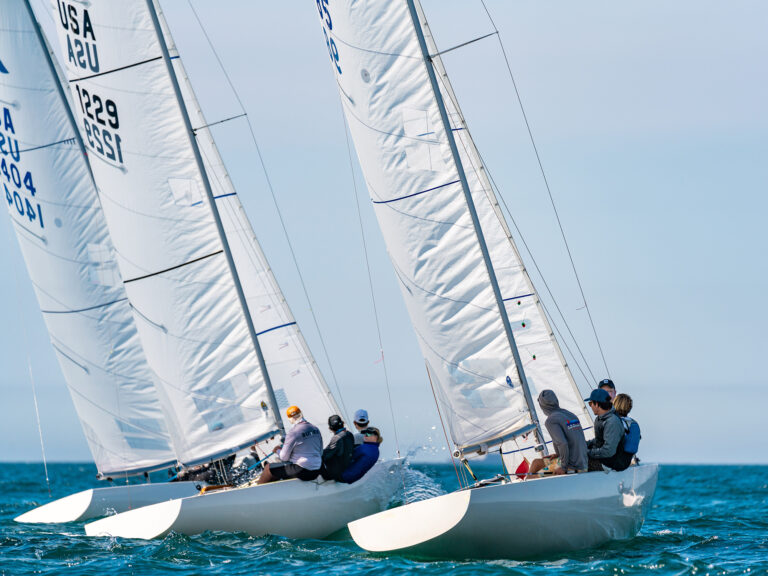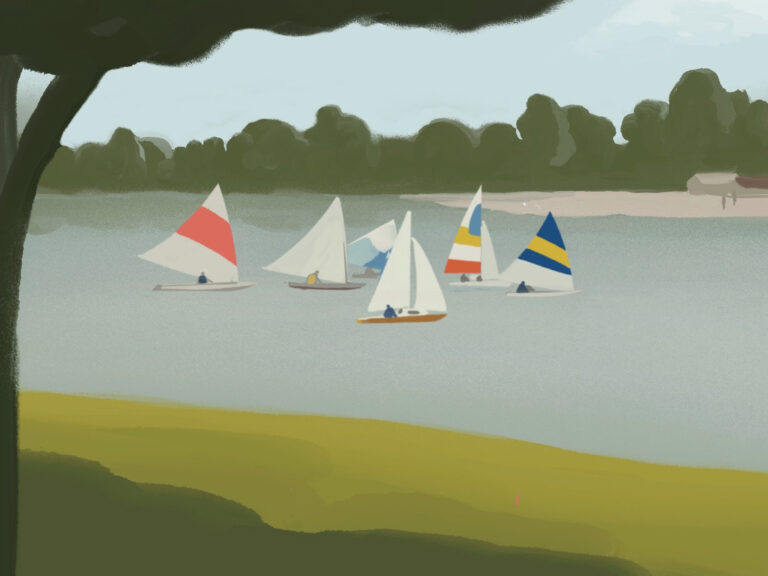Light and lumpy is the best description of today. Especially on starboard tack, keeping the boat up to speed was a real challenge. We were not particularly fast, so I’m not going to offer any pointers in this regard. What I would like to address is how to decide on tactics when you have no idea which side is going to pay.
Many days, you have a good feel for the wind, or you know there are certain recurring features you can count on, like more wind on the right. But for the last two days, I’ve had no idea where to go after the start. With the sun and big waves, it’s very difficult to see the wind. We try to look at the class ahead, the Melges 32s, but that often proves more confusing than illuminating. There are some shifts, and there are definitely some areas of more wind. In the lighter wind speeds, it’s more important to find pressure, but how to do this?
One basic technique that often works is to start near the middle of the line and carefully observe what is happening in the first minutes of the race, then go that way for the middle of the beat. This is particularly effective if there’s a persistent shift or an ongoing advantage to one side. You have to be a little bit careful that you don’t live in the past, especially if the shifts are oscillating or the puffs are localized.
Another approach that can keep you in the game is to make sure you tack and jibe in good pressure. At least you’re able to get up to speed quickly and minimize the tack loss. This will often keep you in the good wind for longer, especially if you’re having trouble seeing the wind.
If you have good speed, another approach is to stay near the majority of the boats. I don’t mean right in the middle of a bunch of boats; stay in the general part of the course as most of the fleet, and you’re less likely to get really wiped out. You probably wont be first, but you won’t be last, either, and you can stay in touch until an opportunity for gain presents itself.
One thing I’ve never understood about Key West: Why are there chickens all over the place? In the morning, you hear the roosters crowing. Walking down to the boat, you see chickens in many of the gardens and parking lots. Some pretty nice looking birds, too! Where did they come from? Who feeds them? If anyone knows the history behind the chickens of Key West, please contact me. It’s kind of a crazy place for people; maybe this is true in the avian world, too.









